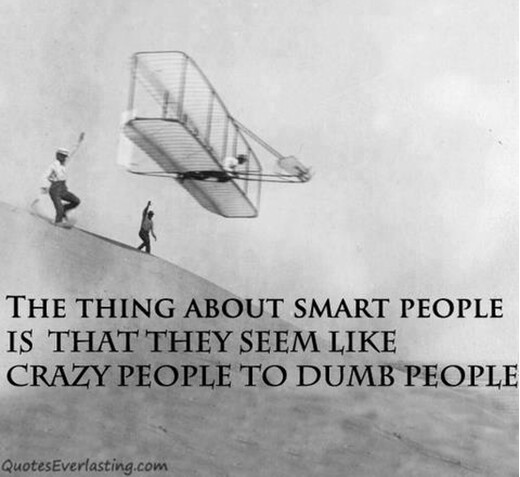
Making this kind of offer won’t necessarily produce an immediately measurable return. But its impact will ultimately return value many times over.
If you’re tracking financial return on investment (ROI) as the sole benchmark to determine if your marketing programs are working, then you need to know that there are other ways in this new world to go about doing so because otherwise you’re missing a big part of the picture.
You see, as much as we like to talk about ROI being a critical metric for marketing success, there are not many organizations that really calculate this metric — I mean really calculate it. The reason being that linking ROI to business efforts is just plain difficult, especially as a cumulative total, due to the blurring of cross-channel integration, competitive activity and economic and marketplace factors. The truth is, most CMOs have a general sense for what’s working and what’s not with respect to overall marketing spend and therefore overall ROI is calculated with experience and intuition (not on a spreadsheet).
The thing is, marketing isn’t black and white, and there are a number of marketing objectives don’t link directly to revenue / return. What if the objective is branding or awareness? You might expect an indirect impact on sales. You would also measure the success of the campaign very differently; maybe you just want to see if more people visited the website, or visited the store.
Enter Return on Objectives. Analyzing ROO means that you accept and understand that not all goals are measurable with hard data. Sometimes, marketing efforts simply help a business move in the right direction to meet its long-term objectives. For example, it could take the form of a business that develops a social media plan and creates a library of content on its website blog page, Facebook page, YouTube channel, and so on over the course of a year, all of which will undoubtedly move the company closer to its long-term brand building objectives.
There has been and always will be two schools of thought on the value of hard vs. soft metrics. Solely relying on traditional ROI isn’t enough and there will always be marketers who don’t like the fact that soft metrics play an important role in marketing today, but without considering them, a big piece of the story is missing. For example, the value of word-of-mouth marketing and an emotional connection to brands can’t necessarily be quantified. But that doesn’t make it any less important. A CEO, CMO, or CFO who ignores the less tangible importance of engagement and consumer perceptions of brands will limit the potential growth of those brands. In today’s world, that’s a big mistake. The best marketing leaders and teams can marry the two — hard and soft metrics — in order to make the best strategic decisions for the company.
Think of it like this: If short-term financial ROI is the single factor with which marketing activity is measured against, many large successful brands would never advertise. For most business types, only a smaller proportion of marketing communication generates a short-term purchase response, and this is particularly true for well-established mature brands.
Investment in marketing communication for some brands should therefore be seen for often what it really is: reinforcing/strengthening favorable brand perceptions and insuring the brand’s strength and status for the future. It isn’t always a math calculation where the dollars spent have to exceed dollars coming in. So much of building brand value is tied to emotional involvement in a brand, and that’s even harder to quantify than social media conversations and sharing. However, I don’t think anyone would argue that emotional involvement doesn’t add to equity (at least I hope they wouldn’t). Otherwise, a brand like Nike would be just another athletic shoe company. Disregarding those emotions because they can’t be precisely quantified would be a tragic mistake.
As well, what current ROI metrics don’t account for are what I’ll call “lurkers,” the people that are watching and waiting to take action. If we as marketers bail too soon based on the short-term analysis of results, then we miss the boat. How many of us have at one time or another been a “lurker?” All of us, right?
That said, without a doubt most marketers want to prove that the dollars they have invested have achieved measurable success and cost effectiveness. For me, ROO can be defined as the “Total cost of campaign divided by the number of objectives met.” To do it right, the key to measuring ROO is that specific objectives need to be created from the outset of a project along with a specific end date. In other words, the marketer must plan for measurement at the same time that the campaign is being developed.
So, instead of evaluating success based on revenues, marketers should take a look at measuring returns based on whether their objectives, from brand awareness to customer relationship-building, are met. Completion of these objectives, rather than dollars earned, will determine the success of a given campaign. As a result, ROO results will come in all shapes and sizes, but will not necessarily be defined in immediate dollars and cents…just like the offer in the photo above probably achieved for Plaza Cleaners.
My point is that ROI numbers don’t tell the entire story and relying on hard metrics alone isn’t enough. The hard and soft data is available to you for you to use it. You can bet your competitors are…or will be doing so soon.
####
Rolf Gutknecht is vice president, director of account services for LA ads. To discuss your thoughts with Rolf on this blog or any marketing matters, email via this link, or visit www.LAadsMarketing.com. You can also connect with Rolf on LinkedIn.
 A few weeks ago I wrote about the Seven Deadly Sins of Marketing and hopefully all of you sinners out there have repented. Given the response, I thought it might be good to talk about the flipside, the Seven Cardinal Virtues of Marketing. To paraphrase Abraham Lincoln, “Vices and virtues: Can’t have one without the other!” Anyway, as individuals responsible for the marketing activities of the organization, it’s worth reminding ourselves that we do have a responsibility to “behave” in a way that allows for the marketing function to perform its responsibilities in a manner that helps the company survive and thrive.
A few weeks ago I wrote about the Seven Deadly Sins of Marketing and hopefully all of you sinners out there have repented. Given the response, I thought it might be good to talk about the flipside, the Seven Cardinal Virtues of Marketing. To paraphrase Abraham Lincoln, “Vices and virtues: Can’t have one without the other!” Anyway, as individuals responsible for the marketing activities of the organization, it’s worth reminding ourselves that we do have a responsibility to “behave” in a way that allows for the marketing function to perform its responsibilities in a manner that helps the company survive and thrive.
Patience
In today’s world of “needed it yesterday,” too many marketers see patience as something that can’t be accepted by the company because it’s “just not how we roll.” Well, as a marketers we need to continue to be reminded that patience is a valuable skill and critically important to the growth of the company. For example, staying the course of what the brand’s strategy is when you know it is the right course, rather than over-reacting to others’ activities. As well, patience guides how long to stick with your marketing message. It may feel like it is old and stale to you but that’s because you’re exposed to it daily while prospects and customers aren’t nearly as familiar with it. That doesn’t mean you should keep repeating the same thing over and over again, especially if a better approach is required. Be patient with yourself and resist the temptation to compare your progress to that of others. Hey, it takes some time to set up a lead generation and follow-up machine that will crank out good results month-after-month, right?
Diligence
Sometimes the best course is to apply a little dose of patience and sometimes one needs to persist and push through the challenge at hand. Be diligent in doing something every day to move your marketing and sales programs forward. You can always do a bit more to optimize the website, create more content, tighten your message or figure out how to better add value to the selling process. Keep learning the new skills necessary to succeed in a changing marketing world. Since the web is such a powerful awareness and lead generation tool, anything you can learn about how it works is helpful. With social media becoming an increasingly more visible component in your marketing efforts, be determined to write that blog post, send some tweets, utilize LinkedIn, etc., even when you don’t feel like it. You never know when your efforts will pay off. In short, it’s keeping the brand’s finger on the pulse of the market, and working to respond properly to it.
Fortitude
News Flash! The marketplace is as fluid as water so the watchwords for the day are “Stay Alert and Stay Brave.” “The Fast and the Furious” isn’t just a name of a movie series, it’s also how the Net moves. It can also describe competitive activities and certainly how your customers think and take action. Keep in close touch with those factors that will either lead you to success or be the things that will keep you up at night. Do your best to stay up to date by doing the necessary customer and competitive research by seeing what is being written and said about you online from Epinions to Yelp and many more review sites. Remember, “not knowing” is just that and more than one company has been blindsided by bad sales results because they imagined they knew what was going on in the marketplace and what customers and prospects thought of them. Sure they did.
Honesty/Justice
Customers know when companies are not being upfront or honest with them by what they see, read or hear in the marketing or advertising. They know when you’re trying to hide behind the small legal type or legal mumbo-jumbo. And guess what? As people who really dislike honesty, they bail…and they let others know about it as well. Conversely, think like your customers: If you had a problem with an order and wanted it resolved, you’d want to be treated fairly—and so would they. Make sure that your marketing material and activities reflect a company who respects and values their customers…because we know that they’re not easy to come by.
Faith/Courage
Believe in yourself and what your company is marketing. Know that marketing does work, regardless of the naysayers throughout the organization from C-Suite to the folks in finance and sales. My business partner is quick to point out that marketing is a self- fulfilling prophecy: If you believe in it, you’ll commit to it, invest in it and give it time to work… and it will. Or, if you don’t really believe in it, you’ll hold back, and guess what? It won’t work, and you’ll be right as well. If we’re honest with ourselves, there are times when we’ve wondered if what we’re doing is really achieving the goals we’ve set forth. Realize that success usually comes only after setbacks. View failure as an unavoidable component of success.
Prudence
Planning and acting can be difficult for a lot of marketers who often fear looking indecisive or making a mistake when the firm’s future—or their job—is at stake. Making decisions that are politically expedient, that travel the path of least resistance or avoid confrontation are dangerous and often unproductive without thinking through the ramifications of the decision. And when that happen, like clockwork, a marketing problem raises its ugly head. To help with that, first listen to what others have to say because the right answer might possibly come from them….really. Second, judge with the information in hand. And then, once you judge the right thing to do, the next thing to do is act. Otherwise, what’s the point?
Chastity/Charity
It’s a virtue combination that in our everyday life we think is important….but is rarely acted upon in business. Yes, as marketers we’re responsible for communicating a meaningful and unique value proposition that the brand alone can own and then making sure that the audience embraces it both emotionally as well as rationally. But shouldn’t we also make sure that the brand contributes something meaningful to the market – or even better, the society? A brand should stand for something more than just the product or service that comes from a company. A reputation for being a good corporate citizen only comes through actions that don’t have an obvious ROI attached to it, such as sponsorship or participation in causes or activities that benefit the community because it’s a right thing to do. Think about how as a marketer this chastity/charity mindset could feed the soul of the organization.
As marketers, we realize that the marketplace brings with it many trappings and temptations that could lead us astray from doing the job that both we and the company expect. Recalibrating our thinking and actions to embrace the virtuous side of ourselves in a way that also benefits the organization will lead us to a better place. Let’s go and do good. Your company and customers deserve it.
####
Rolf Gutknecht is vice president, director of account services for LA ads. To discuss your thoughts with Rolf on this blog or any marketing matters, email via this link, or visit www.LAadsMarketing.com. You can also connect with Rolf on LinkedIn.
Not too long ago, I  watching a series on PBS about the Seven Deadly Sins (Wrath, Pride, Envy, Greed, Sloth, Lust and Gluttony) and things started churning in my mind. So I decided to list my “Seven Deadly Sins of Marketing,” given what I continue to see taking place within marketing and marketing departments across all different industries.
watching a series on PBS about the Seven Deadly Sins (Wrath, Pride, Envy, Greed, Sloth, Lust and Gluttony) and things started churning in my mind. So I decided to list my “Seven Deadly Sins of Marketing,” given what I continue to see taking place within marketing and marketing departments across all different industries.
Guessing
In the Dilbert cartoon series, Dilbert says that “marketing is just liquor and guessing.” Funny…but as we know, a bit simplistic. Yet, too many companies assume that there is absolutely no need to substantiate their beliefs about the marketplace, about what their prospects want, about why their customers are buying, about what people think of their brand, about most anything having to do with those whom they want to purchase their products or services. Generally the thinking is that no one can know the marketplace as well as the company and the market will accept whatever you offer. Guess (pun intended) how that turned out for Kodak, Borders Books, TWA, and certainly some companies in your own industry! Ask yourself, when was the last time that your company committed the time and resources to do some marketing research…qualitative, quantitative, ethnographic, etc. And do it right.
Marketing by Committee (Indecisiveness)
I’m not sure why, but when it comes to marketing, everyone seems to have a say. Partners, staff, associates, spouses, and the janitor all want to give their two-cents. How about an accounting committee to help figure out where the credits and debits are posted? Or an office supply committee to pick out the colors of pens you order? Many executives forget that great marketing is not about what they like. Great marketing is about what works.
Committees, by nature, are full of compromises so solutions are usually watered down versions that will wind up doing little or nothing to accomplish your growth goals. Marketing by committee leads to lots of bad ideas and poorly thought out plans. Instead of bold strokes from the marketing brush, you get a sea of beige. And then it doesn’t work. Who would have thunk it! The solution is to decide on objectives and budget, and then write a marketing plan. Once the plan is approved, ONE person gets appointed within the organization to take on the role as “the decider.” Empower him or her to make all the courageous decisions required to position your company to dominate your category.
Inconsistency
When different aspects of your marketing messages don’t reinforce each other, the inconsistencies alienate prospects and current customers. Inconsistent marketing distorts clear expectations, makes potential customers unsure of the characteristics of your products and creates unhappy customers who don’t get what they expect. These inconsistencies affect businesses by reducing both initial sales to consumers as well as repeat sales from dissatisfied customers. Also, be consistent with your marketing plan. Don’t stop running an ad, for instance, just because the first insertion didn’t ring your phone off the hook. Give your campaign time to work, but you also need to know when a change in direction is a good idea. Remember, people are not paying that much attention to you, but when they do, it helps if the message you’re saying now is similar to the message that they heard the last time.
Complacency
It’s out there right now. Lurking in the shadows of your success. It is the silent business killer that strikes without warning and can bring even the biggest and the brightest companies to their knees. What is this hidden terror? Complacency. We all know it better as the dreaded “status-quo.” It generally takes the form of “whatever we did last year.” Except, things change. Your competitors are changing things up. Your customer’s needs are changing. The marketplace is changing. A few things to avoid complacency: Keep looking in your rearview mirror to see what your competitors are doing. Listen to new ideas as the next big idea may not come out of your own mouth. And, strive to always do better even before you are forced to react to a competitor’s challenge.
Lack of Focus
Okay, so after reading articles by “experts” about how you should have a customer engagement program in place (so you can be more “customer-centric”), you’ve put your company on LinkedIn, YouTube, Facebook, Twitter, Google+, and Pinterest. Heck, you’re even ready to go when the next big social media platform launches. You’ve got your product literature online, and your Web site has a blog and videos. Not to mention all the offline activities ranging from tradeshow activities to advertising to PR, etc. But why did you believe you needed to be in ALL of these social media locations in the first place, and, just as importantly, who is making sure that all of these activities work together?
Narcissism
It’s ridiculous that I have to say this but the memo has not reached the desk of many marketers, so here goes: “It’s not about what your company wants to say but rather about what the customer wants to hear.” (I feel better having said it.) Look, if you want to market based on your personal preferences without regard for what works best with your prospects, that’s your prerogative. But I’d suggest that your company’s marketing not be so self-absorbed. Remember, you don’t buy from you, others buy from you and they don’t care about your business and your troubles nearly as much as you do. Most people are tuned into Radio Station W.I.I.F.M. —“What’s In It For Me!” If your marketing message is all about you, then your customers won’t notice what you’re saying. Please begin to “tune” into your customers, find out what they really want and focus your message on them.
Confusion
Maybe, just maybe, the deadliest marketing sin of all is not having one over-arching marketing strategy – and insuring its implementation through all your tactics. Executing marketing tactics without having a well-developed integrated strategy is like leaving your roadmap tools at home and taking off on the drive without considering if you’ve chosen the right road. You wouldn’t haphazardly set off on an important trip in your car so why let it happen with regard to your company’s marketing activities. It’s easy to start with the “how” but if you haven’t identified the “what,” you may find yourself spending a lot of time executing tactics that don’t take you where you want to go and in so doing, you’ll be wasting time, resources and losing out on sales-producing opportunities. What is needed is one single integrated strategy that looks across all delivery platforms whether online or offline, print, broadcast, or mobile. Your customers don’t have an online self and offline self and neither should you. Think holistically about all your marketing initiatives.
Yes, there are more Deadly Sins that I could have talked about, like trying to be a “do-it-yourselfer,” or not measuring your activities, or saving yourself into bankruptcy, but the above are the Seven Marketing Sins I rank topmost. Now, let us all go out and to the best of our ability, sin no more.
####
Rolf Gutknecht is vice president, director of account services for LA ads. To discuss your thoughts with Rolf on this blog or any marketing matters, email via this link, or visit www.LAadsMarketing.com. You can also connect with Rolf on LinkedIn.
 Over the past year, I’ve been having a conversation with clients, co-workers, friends and family about “the state of marketing” and the results are in. Marketing (and its various forms) seems to be dumbing down more and more. And since I’m not wired to accept mediocrity or any real form of laziness, allow me just this one time to channel my best Peter Finch (in the movie Network) and say “I’m as mad as hell and won’t take it anymore!”
Over the past year, I’ve been having a conversation with clients, co-workers, friends and family about “the state of marketing” and the results are in. Marketing (and its various forms) seems to be dumbing down more and more. And since I’m not wired to accept mediocrity or any real form of laziness, allow me just this one time to channel my best Peter Finch (in the movie Network) and say “I’m as mad as hell and won’t take it anymore!”
Can someone please tell me why this is going on? In what forms does this dumbing down of marketing play itself out? Well, for starters, open up any newspaper, magazine or trade pub. Turn on any TV or radio station. Drive down the street and look at the billboards or bus panels. And even online. It’s all around us… at home, at work… even on vacation. There’s isn’t a day that goes by where I don’t see some sort of advertising or marketing effort and say “what in the world are they trying to say?” This coming from a guy who, as humbly as I can say this, can put 2 and 2 together pretty darn quick. But the mental gymnastics that I have to do to try and get the point, if I can get there at all, is becoming more and more prevalent. In most cases, the message is convoluted. Other times, the message is beyond generic so much so that any company in that industry (and in many cases, in another industry) could say the same thing. Oh and then let’s not forget about puns or borrowing from successful campaigns (“Got Dog Food?” “Got Rice?”) Many times the channel isn’t right for the message and the message is obviously shoe-horned into the event or activity. Whether B2B or B2C environments, it goes on. Please tell me that you’re seeing the same thing. You are, right?
Additionally, I’m gobsmacked (haven’t used that word in a while) at the type of “discussions” on issues that are being pondered within some of the LinkedIn groups of which I’m a member. From the “Is it important that Sales and Marketing be on the same page?” to discussions that people dare not ask of their coworker “How do I go about finding a direct mail printer?” Not to mention the blogs that deal with the details of details. On top of that, there also seems to be this craze for incorporating each new marketing tool, channel or approach (“the next big thing”) as though it will be the silver bullet to all the company’s marketing problems. And, to make matters worse, there’s a sprint to implement each new specialty, and in doing so, marketing starts heading down the slippery slope of actually getting further away from understanding the real world in which prospects and customers make purchasing choices. I think we can agree that this is neither good for the organization or for business as a whole. Not good at all.
OK, at what point in time was it decided that DIY is as good as what a successful outside marketing firm could provide? My business partner coined a phrase that I really like: “DIY is pervasive but hardly persuasive.” Yet it seems to be what we’re seeing in the world today. The seemingly fun and economical do-it-yourself route usually leads to less than optimal results. Just because one understands how to use some design software doesn’t mean the outcome will help in achieving the goals set for that individual piece of marketing material. I think that we might all agree that what separates the best work from the rest of the herd is what one does with the tools and not the tools themselves.
Another way that I see dumbing down happening is but the shear amount of specialization that goes on. This is not to say that being a specialist is a bad thing…it’s not… but as the marketplace continues to evolve and in so doing become more complicated, there are lots of marketers who know more about less and less due to being so specialized. What I mean is that these “specialists” are so focused on what they’re good at, they forget that you can’t solve an equation by concentrating only on parts of it. They can’t see the forest for the trees!
So how did this all come about? Well, as CEOs and CMOs whacked away at their marketing budgets over the last decade, they stopped hiring the most experienced and talented marketing professionals, the guys and gals with real degrees in marketing and gray hair earned on the battlefields of brand-building. Instead, they hired people with “3-5 years experience” or moved over someone from human resources or finance or even the clerical pool to fulfill the marketing. Or they brought in specialists with social media or website experience and made them responsible for the whole marketing affair. Is it any wonder, then, that we’re seeing the kind of marketing on exhibit every day?
With the marketplace getting more complex and customers becoming more sophisticated than ever, now’s not the time to dumb things down but to think and behave like smart marketers once again.
####
Rolf Gutknecht is vice president, director of account services for LA ads. To discuss your thoughts with Rolf on this blog or any marketing matters, email via this link, or visit www.LAadsMarketing.com. You can also connect with Rolf on LinkedIn.
 Fulfillment isn’t always what it’s cracked up to be, especially in business. Consider a conversation I had today with one of our media reps that revealed why so many B2B ads aren’t just bland but simply bad. This was in response to why an ad appeared in their publication quite differently from what the advertiser expected. (We didn’t do this ad, so we’re off the hook!) When we asked the rep why the ad didn’t fit the space properly, and why the publication didn’t contact the advertiser to discuss the problem, the answer was they’re so used to getting poorly-designed ads, they’ve just come to accept what they’re sent without question.
Fulfillment isn’t always what it’s cracked up to be, especially in business. Consider a conversation I had today with one of our media reps that revealed why so many B2B ads aren’t just bland but simply bad. This was in response to why an ad appeared in their publication quite differently from what the advertiser expected. (We didn’t do this ad, so we’re off the hook!) When we asked the rep why the ad didn’t fit the space properly, and why the publication didn’t contact the advertiser to discuss the problem, the answer was they’re so used to getting poorly-designed ads, they’ve just come to accept what they’re sent without question.
How shocking this answer was to us! And yet, it so perfectly identifies the state of things, not just within one specific industry but across many of the industries in which we work.
The real problem is that in the last several decades, the role of marketing has been relegated to fulfilling. In other words, it seems the task these days is to “get the ad into the pub,” and not worry about whether the ad is great and shifts the attention of the audience. Advertisements, websites, collateral and all other marketing communications are less effective today it seems because they’re just space-fillers. The media plan says they have to be there. So the result is lots of media space or air time taken up with ad messages that aren’t merely forgettable but are also not produced or placed that well.
So it’s time for anyone who is responsible for advertising and marketing to look in the mirror and ask, “Am I a fulfiller or a marketer? Is marketing a task to be checked off on my list of the day’s activities or do I delight in the prospect of arriving at a plan so smart and unexpected, it makes me giggle?” Fulfillment is great in the abstract, but a killer in business.
I’ve often said that marketing is a self-fulfilling prophesy: if you believe it works, you’ll invest yourself and your resources into it fully and – Voilà!- it works; or if you doubt its effectiveness, you’ll put in the minimal efforts (in other words, simply fulfill the order) without great enthusiasm and you’ll also be proven right.
Every piece of communication from your desktop is an opportunity to invigorate sales and renew a conversation with your customer…if you believe it will.
It means, in some cases, looking at the internal team who are engaged in your marketing. Are they people who majored in advertising and marketing in school, and are they still “students” of it today? Or did they move across from the HR or accounting department because nobody else wanted the job? Are they fully invested employing great marketing to grow your operation, or are they also juggling bookkeeping, sales, IT and family services all at the same time? Are you taking full advantage of outside resources who aren’t just design shops and web programmers but genuine marketing specialists, who will challenge and surprise you and are willing to own up to the results?
In other words, at the bottom line, is marketing a joy…or is it a job?
Think carefully about how you answer this. Because your company’s success hangs in the balance.
####
Rolf Gutknecht is vice president, director of account services for LA ads. To discuss your thoughts with Rolf on this blog or any marketing matters, email via this link, or visit www.LAadsMarketing.com. You can also connect with Rolf on LinkedIn.
 Retail pioneer John Wanamaker was famously quoted “Half the money I spend on advertising is wasted; the trouble is I don’t know which half.” It’s the dilemma of marketers whether they’re in retail or manufacturing, whether they’re spending tens of million dollars a year on marketing or just ten thousand.
Retail pioneer John Wanamaker was famously quoted “Half the money I spend on advertising is wasted; the trouble is I don’t know which half.” It’s the dilemma of marketers whether they’re in retail or manufacturing, whether they’re spending tens of million dollars a year on marketing or just ten thousand.
As catchy as the quote may be, it’s not really that difficult to parse the answer. After all, there are only two fundamental components to advertising: what you have to say and where (or to whom) you say it. The half most advertisers spend the bulk of their money on is the “where,” which really means the media. So when the advertising results in a resounding thud, all that expensive media gets the blame. I can’t tell you how many times I hear a new client tell us “I’ve run in radio and it doesn’t work” or “We don’t use billboards, that’s a waste of money.”
Gentle readers, here’s the simple truth: if the message is not compelling, you can quadruple your advertising spend and still get dismal results.
Let’s put it in human terms. The guy who’s popular at a big party will be popular at a small party. The guy who’s a bore at black tie gala will put people to sleep standing at a car wash. So, in short, it’s primarily all in the messaging. What you choose to do at this juncture is what will affect everything that follows. So here are some ways to think about making both halves of your advertising dollars work for you:
So, in essence, getting your money’s worth starts at the very beginning, not at the end. Putting the bulk of your focus on messaging, rather than media, will be much more rewarding. Oh, and while we’re at it, D-I-Y is pervasive – but hardly ever persuasive! Try this on for size: open up 5 trade or consumer magazines and tag or cutout 10 ads that stop you in your tracks… ones that convey a strong value proposition, ones that you wish your firm had done! My completely biased but nevertheless absolutely accurate guess is that all 90% of those ads you clipped out were created by a marketing or advertising agency.
Also, don’t substitute hard-core strategic homework for a clever headline. And don’t think that the media selection is wrong when the creative you’re placing in it is what’s sending your audience running in the wrong direction. (I’ve seen humble bus benches create insanely great response when used creatively.)
There. Now you know which half of your advertising needs more of your love.
####
Rolf Gutknecht is vice president, director of account services for LA ads. To discuss your thoughts with Rolf on this blog or any marketing matters, email via this link, or visit www.LAadsMarketing.com. You can also connect with Rolf on LinkedIn.
 So you have a horde of demographic data, but do you really understand: Who is your customer? This question is not as easily answered as you think.
So you have a horde of demographic data, but do you really understand: Who is your customer? This question is not as easily answered as you think.
If you’ve written a marketing plan in the past 10 years or so, you’ve probably described your company’s target audience like lots of other marketing people do. And by that I mean things like “adults 55-65 who enjoy eclectic rock music and listen to Pandora” or “men 25-40 who like to run or bicycle 2x per week” or “CFO’s of businesses with annual sales between $15-$25 million.”
While these descriptions all follow the format taught in Marketing 101 to MBA classes in universities around the country, they’re unfortunately all nearly worthless because they provide almost no relevant information for making strategic decisions. Yes, it’s important to have this kind of information be part of the target audience description, but every year, innumerable marketing directors automatically write up plans with these kinds of empty descriptions of their target audiences. And every year, these same companies run around trying to figure out why they’re not really connecting with their customers.
Why demographics aren’t enough
First of all, your customers aren’t demographics. They’re not age ranges…or job titles…or geographical regions…or salary brackets. They’re human beings. It’s almost ridiculous to have to say that, but companies are constantly unable to remember this basic fact. Consequently, these so-call customer-centric organizations continue to roll out downright uninspiring messages to their audiences. “Got (fill-in the blank)?” Or “Do you like to garden? Then you’ll love GroundHog Tiller”? Or, “Kangaroo Jumpers are designed for the active adult outdoor workout enthusiast.” Or, “Springboard provides IT professionals and developers with the platform and tools needed for server administration, application extensibility, and interoperability.” While good money is spent in creating online sites, digital advertising, offline marketing materials and media placements, customers roll their eyes and shake their heads in disbelief (or worse, simply ignore the messages) because they know marketing drivel when they see it–just like you do–and they quickly move on to something more fascinating and relevant.
To sum it up, demographic information is good to have because it’s helpful to know something about the people you’re targeting and it gives you a good foundation to build our buyer personas on. But in today’s world, mere demographics 1) don’t tell you what these people’s pain points are, 2) they don’t tell you about their personal goals, and 3) they don’t tell you about interests and style. That’s why demographics just aren’t enough. Real-life people (i.e. your wife/husband, your mother/father, heck, even you) don’t view themselves as demographics. So as marketers, we shouldn’t view them that way, either.
Getting to know your customer
If it’s important to connect with your customers so that they take the time to listen to what you have to say, you have to stop pushing uninspired marketing clichés on them and instead focus on understanding who they really are, how they really think, and what’s really important to them. That soccer mom driving the crossover SUV with 2.5 kids? Well, her name is Lori. Yes, she goes to early morning workout classes at her fitness club, but do you know why she goes? She’s also on Facebook at least twice per day, but do you know why? Stop making assumptions (because you’ll probably be way off) and start asking questions. Then, when you start to understand, you can get real in the way you talk to Lori. (FYI, Lori goes to early morning workout classes because…she worries about heart disease as she ages since her aunt died of a heart attack at 51, and she’s on Facebook twice per day because…she’s responsible for the social media activities for her company. Probably not what you thought, right?)
Everyone sees the same person
So once you better understand what’s going on in the minds of your audience, you can do a few things to ensure that this information doesn’t just sit in a binder on shelf, but rather that it becomes an everyday part of how your marketing activities are created and put to work.
One example, and a personal favorite of mine, is to create a “customer persona” – an example of the person that would interact with your product or service – with a name, face, and look to help your team connect with your target audience in a more direct and insightful way. In order to achieve this, you need to recognize (or at least imagine) that prospect’s personal and professional interests, priorities, aspirations, fears, motivations, goals, pain points, etc. These factors will have a major influence over what catches their attention when it comes to solving a business issue. Personas concentrate on what a user does, what frustrates the user, and what gives the user satisfaction. A good persona is a narrative that describes a person’s typical day and experiences. In short, bringing the “user” to life helps you better understand what drives your user so you can build around that. (Note: There are numerous customer persona examples that you can source online to show you how it’s done.)
As a result of creating a customer persona, your team no longer has to try and hold an abstract or numeric customer profile in their heads. Nope. All they have to do is ask, “What would Lori think about this?” This simple but important change can bring about significant differences in the way a company considers its customers during decision-making processes.
So, let’s try this again: who is your customer?
####
Rolf Gutknecht is vice president, director of account services for LA ads. To discuss your thoughts with Rolf on this blog or any marketing matters, email via this link, or visit www.LAadsMarketing.com. You can also connect with Rolf on LinkedIn.
 As a partner in a thriving marketing firm that targets companies with $20-$100 million in annual sales, one of my responsibilities is that of business development. While I learn something in each conversation with people in marketing leadership positions, many times after I hang up the phone, I say to myself, “there’s another one who’s losing sales to their competitors!” Mainly that’s because these folks have adopted some misconception about marketing as the “truth” that they can’t and won’t let go of no matter what. So while they say they’d like their sales to be stronger, their year-over-year sales won’t change much or, in some cases, will decrease from one year to the next.
As a partner in a thriving marketing firm that targets companies with $20-$100 million in annual sales, one of my responsibilities is that of business development. While I learn something in each conversation with people in marketing leadership positions, many times after I hang up the phone, I say to myself, “there’s another one who’s losing sales to their competitors!” Mainly that’s because these folks have adopted some misconception about marketing as the “truth” that they can’t and won’t let go of no matter what. So while they say they’d like their sales to be stronger, their year-over-year sales won’t change much or, in some cases, will decrease from one year to the next.
So, let’s do a quick run-through of 5 most common fallacies that I hear. Hopefully none of these sound as familiar to you as they do to me.
I can grow my sales and “share of pie” with a smaller budget than my competitors
When I hear this, it generally implies two things to me: 1) Either your competitors are wasting a big portion of their marketing budget on initiatives or messaging that doesn’t connect with the customers or, 2) your marketing partners are fantastic because they’re willing to work for less than the average market price in order to do the wonderful work they do…which I have a hard time believing is the case. Oh, and then let’s not forget about the inability of these companies to track how much money the competitor is actually (over) spending on marketing.
The reality is this: if your company is spending a good deal less than the competition, you’re probably not making any significant gains in market share. Yes, there might be a competitor that’s overspending, but my experience working with companies from the Fortune 100 to small mom-and-pops is that you don’t pose a serious competitive threat unless your marketing budget is in the same ballpark with your competition….it’s just one of those “marketing truths.”
Marketing’s role is to generate new business
You’ll get no argument from me that one of the jobs of marketing is to generate new business, directly or indirectly. But just as important, marketing’s role is to make existing customers come back for more, that is making customers loyal to the brand. Many businesses are so focused on attracting new customers that they tend to ignore – or even walk away from – the existing ones. Yes, new customers are constantly needed, but truly successful companies prosper on their ability to retain the customers they’ve already acquired. The reason is simple: finding new customers is expensive and time-consuming. Let the following research statistics wash over you….
New business is always good but don’t forget who’s paying the bills.
We’re looking to be more visible with our customers because it leads to better engagement
Reaching the right balance between quality and frequency of the message requires careful consideration. There is a common belief among some that the more we communicate with our customers, the more “engaged” they will become. In fact, not knowing when to “zip it” is a classic marketing mistake that too many marketing people make. If marketing is about building relationships with customers, over-marketing is the best way to kill the relationship and send the customer or prospect heading for the door. A social engagement study entitled “The Social Breakup” prepared by ExactTarget, provides clear evidence of what happens to customer relationships when the marketer comes on too strong:
Guess the biggest reason people break up with companies? (Drum roll)…Too much marketing. The study showed that:
In short, increasing the frequency of communication shouldn’t be your marketing goal. Constantly improving content quality should be.
We don’t need a marketing firm because we can do it in-house for less
It’s the #1 thing I hear the most. A survey conducted by American Express Canada shows that “84% of small business owners say branding is important to overall business success, but only 14% hire third-party experts to help with branding.” I am not surprised by the results, and I can only guess the reasons: agency expense, the desire to have full control over the creative process, poor prior experience with an agency, or possibly the ability to make changes faster on one’s own. So, instead of looking for an outside marketing partner, many companies decide to hire a “marketing person” who wears many hats: graphic designer, social media specialist, copywriter, etc. Let’s be honest, no marketer can be a specialist in everything, unless the company is willing to cut corners on how it presents itself to the world.
Now please understand, I’m not trying to bash the in-house marketing department as there are a lot of smart and talented people out there working for companies. Rather, my point is this: the right outside marketing partner will bring a focus to the marketing initiatives or project, resulting in faster execution time; will come in with an original point of view – more in line with how your customer will interpret the messaging; develop much fresher creative (no “vanilla” wallpaper stuff that gets passed over, and; deliver a much higher level of production quality. Try this on for size: open up 5 trade or consumer magazines and tag or cutout 10 ads that stop you in your tracks… ones that convey a strong value proposition, ones that you wish your firm had done! My completely biased but nevertheless absolutely accurate guess is that all 90% of those ads you clipped out were created by a marketing or advertising agency.
We’re looking for something beyond traditional marketing because that kind of advertising is dead
The internet is chock full of advice on how your company should abandon traditional “old school” communication methods and make the switch to online. It would seem like TV, print ads, billboards, and radio are dying and not worth considering in the overall communication strategy. Yet, research (and lots of it) say this is an incorrect assumption. I think we can agree that the best marketing communication strategy uses a mix of offline and online tactics to reach the target audience. (Do yourself a favor and visit www.marketingcharts.com and subscribe –it’s free. Here you’ll get daily research updates on a wide range of topics including how traditional channels are preferred over digital depending on the audience.)
While it’s true that more money is shifting towards digital, the traditional marketing channels are still heavily required in many business environments. In fact, when Google started getting serious competition, they started running…wait for it…TV ads! When Dollar Shave Club saw that their growth was limited by only online marketing, they started using those old, traditional channels that have in turn made them a rising star company. When there’s a product launch, a sale or just about any other occasion where you need to reach a mass audience quickly and effectively, there’s still no substitute for paid media…and even the dot-coms know it. Think about this, in 2014, the average cost of a 30-second Super Bowl ad was more than $4 million. No CEO or Marketing Director would ever approve such a budget without taking ROI into account, right?
So as I noted earlier, hopefully none of these sound familiar to you. But if on the other hand you’ve heard or said one of these things in the past, know that a lot of confusion, frustration and unrealistic expectations can be eliminated by seeing the world through a different set of lenses.
####
Rolf Gutknecht is vice president, director of account services for LA ads. To discuss your thoughts with Rolf on this blog or any marketing matters, email via this link, or visit www.LAadsMarketing.com. You can also connect with Rolf on LinkedIn.
As we all know, Pinterest and Instagram have become staples on the social media scene. The right visuals (from photos to quotes to inspirational messages) have great appeal and serve as motivation for many. With that in mind, here are some interesting visuals coupled with some content concerning marketing issues that face marketing teams almost daily as they work towards creating the change in the way people use and interact with their company’s products or services. Short, sweet and fun. Click away! 
The average attention span today is roughly 9 seconds…like that of a goldfish. Nine seconds to communicate a message, earn a little bit of loyalty, build a little bit of trust so you can continue the conversation before your customer starts getting distracted! So what could you possibly say in that time or less to get someone’s attention? It starts with presenting your message in clever and unexpected ways. It grabs people’s attention and has them focusing on the message and not thinking about the other stuff that could come into their mind. They’re engaged and captivated. In doing so, it allows you to persuade them, get them to trust you, get them to believe you, get them to want to connect with you. A shift in perspective from speaking about yourself to speaking from the audience’s point of view can be remarkably effective. Witness a beautiful commercial for a British online content company featuring a blind man whose original cardboard sign talks about himself, “I’m blind. Please help.” But when a caring passer-by changes the words to be more audience-focused, something powerful happens. The symbolism is powerful. To read more, click here.
Social media as a pathway to sales is almost certainly not going to work to the degree you want. There…I said it. While social media can be a valuable marketing tool, it’s not magic and it cannot and won’t replace everything that came before it. There’s no quick success and very few programs break through. Coca-Cola says it can find no correlation between “buzz” on Twitter and actual unit sales. Nissan admits it has no idea if social media helps it shift cars. MasterCard can’t tie its social investment to revenues. Don’t take my word for this. Go online and do your own research and see for yourself. In fact, there remains little evidence social media does anything to boost brands’ bottom lines. So then why use social media at all? The reason is that it is an impactful vehicle for empowering advocacy and we know that’s extremely important for brand health and profitability. Social media, if done right, can capitalize on what brand equity your company has already built up. To read more, click here.
 When was the last time you/your marketing team asked the question “I wonder what would happen if we ________.”Crazy ideas have changed the way we go about living our lives. Knowing this, why is it that many marketers still don’t trust the crazy idea when it shows up unexpectedly especially, since crazy ideas, not safe ideas, are the game changers that propel companies forward? In today’s competitive, me-too world, if your product isn’t a legitimate leader in a category, it’s certainly a far better choice to come up with a new value story around your own product or service rather than trying to compete price-wise on the value that was generated by a competitor. You might want to be thinking about a crazy idea that will create a new meaning around your brand. Embrace that mindset so much so that the next time an idea is presented by your marketing department and someone outside of that department says “That’s a crazy idea,” you’ll say, “Thanks, we love it as well!” To read more, click here.
When was the last time you/your marketing team asked the question “I wonder what would happen if we ________.”Crazy ideas have changed the way we go about living our lives. Knowing this, why is it that many marketers still don’t trust the crazy idea when it shows up unexpectedly especially, since crazy ideas, not safe ideas, are the game changers that propel companies forward? In today’s competitive, me-too world, if your product isn’t a legitimate leader in a category, it’s certainly a far better choice to come up with a new value story around your own product or service rather than trying to compete price-wise on the value that was generated by a competitor. You might want to be thinking about a crazy idea that will create a new meaning around your brand. Embrace that mindset so much so that the next time an idea is presented by your marketing department and someone outside of that department says “That’s a crazy idea,” you’ll say, “Thanks, we love it as well!” To read more, click here.
If you want to have passionate customers and dedicated partners, you must first inspire strong responses. But as you attract fans, you’re also bound to get the critics or “Haters.” It’s OK to have some folks (not too many, though) who will not like your brand. The undeniable reality is that if you’re not eliciting a negative response from someone somewhere, then you’re probably not that fascinating to anyone. Think about it, even Apple has Haters as does Starbucks and it hasn’t hurt them. Alternatively, you have the advocates, evangelists, loyalist…the Lovers. They don’t just buy your product or service, they also accept price increases and forgive occasional “issues.” They’re loyal and not just buying your products for price or utility. In the middle are the Lukewarmers. They have a really bad habit of not caring. They won’t buy your product unless it’s the cheapest or most convenient option which means they’re only buying you until a cheaper or more convenient alternative comes around. In today’s marketplace, this middle ground is death!! Not caring is not buying. Not caring is inaction. The world is not changed by people who sort of care or don’t care at all. Stop focusing on the Lukewarmer. Start by having your marketing and advertising be imaginative, original and fresh. To read more, click here.
Having dealt with all sorts of companies and people, I believe the Number One reason for boring “vanilla” marketing messages is the result of trying to please all the people all the time. Fighting the desire to be all things to all people lets you: 1. Stand out from the herd; 2) Attract the like-minded; and 3) Create stronger connections. Vanilla brands might not have enemies, but they also don’t have passionate advocates whose enthusiasm spreads. In order to win the race, you can’t stand still. Vanilla marketing is standing still. To stand out, to be different, to be memorable, takes boldness. It takes being “a real Marketer”. So, however you go about it, stop defaulting to dishing out plain vanilla marketing and start scooping out interesting flavors (think “Cherry Garcia”; “Chubby Hubby”; or “Chunky Monkey”, etc.) that stand out and are uniquely your own. To read more, click here.
So there you have it. 5 visuals that speak to different marketing challenges and opportunities. Maybe these visuals will stick with you for awhile and even change the way that certain projects, campaigns and programs are developed and executed. Seeing is believing.
####
Rolf Gutknecht is vice president, director of account services for LA ads. To discuss your thoughts with Rolf on this blog or any marketing matters, email via this link, or visit www.LAadsMarketing.com. You can also connect with Rolf on LinkedIn.
 While driving in my car the other day, I was thinking about the recent Mazda TV commercials featuring people that invented something that we commonly use in today’s world. Suddenly, I blurted out something that had me stumped by my own question: “Where do all the crazy breakthrough ideas come from?” And when I say “crazy”, I mean crazy as in unexpected… revolutionary…the WOW kind. Well, after doing some quick online research, it turns out that “formless thought (the stuff that just pops into your head) in a creative mind” is where “crazy” ideas originate from.
While driving in my car the other day, I was thinking about the recent Mazda TV commercials featuring people that invented something that we commonly use in today’s world. Suddenly, I blurted out something that had me stumped by my own question: “Where do all the crazy breakthrough ideas come from?” And when I say “crazy”, I mean crazy as in unexpected… revolutionary…the WOW kind. Well, after doing some quick online research, it turns out that “formless thought (the stuff that just pops into your head) in a creative mind” is where “crazy” ideas originate from.
Many of the products that we can’t seem to live without today started out as crazy ideas – ask the Wright Brothers or Henry Ford or Bill Gates or Steve Jobs or the “Mazda Guys” like Bill Simpson – inventor of flame-resistant racing suits or Martin Cooper – inventor of the mobile phone. Or Netflix, Costco and so on. At the time, it was stuff that nobody needed or was asking for (maybe because people didn’t see a problem that needed fixing), but once developed, it was just the thing that people were waiting for. And each idea proved to be a big success in the marketplace. These crazy ideas have changed the way we go about living our lives and it all started as a formless thought. Knowing this, why is it that many marketers still don’t trust the crazy idea when it shows up unexpectedly especially, since crazy ideas, not safe ideas, are the game changers that propel companies forward. On the other hand, safe ideas are the ones you can more easily assume will work before it takes form in the world. (Note: That said, I’ve never quite understood the concept of guaranteeing a new idea will take hold in the marketplace before it actually gets produced, introduced and marketed. With so many factors involved in making that happen, who can do that?)
In some ways, I think crazy ideas are like the ancient fire that early humans feared until proven helpful. Once these humans first learned that fire made life a lot easier – from staying warm to cooking meat – the idea spread like wildfire (pun intended) and was widely accepted as necessary for a more comfortable survival and not something to avoid at all costs. I believe crazy ideas are like that as well.
In today’s competitive, me-too world, if your product isn’t a legitimate leader in a category, it’s certainly a far better choice to come up with new value story around your own product or service rather than trying to compete price-wise on the value that was generated by a competitor, right? So, if you do find your company ranked 3, 4 or lower in your industry, you might want to be thinking about a crazy idea that will create a new meaning around your brand. Think of it like a “Blue Ocean” strategy.
Two examples come to mind…LA Gear (athletic shoe brand-late 80’s) and Swatch (watches).
In both of these cases, as their larger competitors were keeping an eye on consumer needs related to performance features, both LA Gear and Swatch had the crazy idea that people, and lots of them, were more interested in how they expressed their own personality and style, and these people were willing to pay more for products that helped them do it. In the minds of the customer, these products functionally did what competitive products did…but these products also spoke to them on another level. And in doing so, these two “crazy” companies each created a new category and a competitive advantage that they had all to themselves.
OK, so now what? Well, from where I sit, if your brand/product/service is to prosper in a world that’s driven by the daily creation of crazy new ideas, your company will need to choose whether their marketing department, and their activities, will operate from a creative platform or competitive platform.
When your company operates from a competitive platform, it can only win by having somebody else lose, similar in look to that of a “Red Ocean” strategy. Here companies try to outperform their rivals to grab a greater share of product or service demand. As a result, crazy ideas that are formless and unproven will be quickly be dismissed in favor of the known and the “proven.” Typically the marketing messaging and activities for companies operating from a competitive platform are uninspiring, forgettable, and 2nd tier level within their specific industries. They’re totally devoid of connecting with the customer on an emotional, human-to-human level in part because BIG data has played a huge role in the product coming to market. These messages don’t even register a blip on your consciousness radar screen…they’re that uninspiring.
Alternatively, if your organization operates on the creative plane, it will have a compelling reason for being. It will develop products that redefine the category, fascinating customers with the unexpected, making competition and pricing (in most cases) irrelevant. It’s the type of organization where people don’t settle for the status quo and find “crazy ways” to fill in the blank part of the question, “I wonder what would happen if we ________.” In the movie rental business, “What would happen if we didn’t charge late fees?” Thus, Netflix. In retail, “What would happen if we sold quality products in larger/bulk quantities at the lowest possible prices?” Viola: Costco. This creative plane is where so-called crazy marketing ideas are constantly brought to the forefront for consideration. Where non-traditional thinking isn’t immediately shot down because it doesn’t conform to the “we just don’t do it that way” type of thinking. It’s where your competitors say “why didn’t we think of doing or saying it that way?”
Let me ask you a question: What will your company innovate or creatively say in 2014 that will differentiate your business by bringing higher value to your customer base? My vote would be to get crazy, to break away from commonplace. Embrace that mindset so much so that the next time an idea is presented by your marketing department and someone outside of that department says “That’s a crazy idea,” you’ll say, “Thanks, we love it as well.”
####
Rolf Gutknecht is vice president, director of account services for LA ads. To discuss your thoughts with Rolf on this blog or any marketing matters, email via this link, or visit www.LAadsMarketing.com. You can also connect with Rolf on LinkedIn.